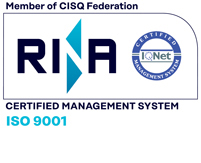Vietnam
GREEN FINANCE FUELS PUSH FOR SUSTAINABLE GROWTH
HÀ NỘI — As Việt Nam accelerates its transition toward a green economy, green finance is becoming a central pillar of the country’s development strategy - essential to unlocking the capital needed to meet its net-zero goals and ensure a just, inclusive shift to sustainability.Green finance - encompassing loans, bonds and investment flows for sustainable energy, infrastructure and climate resilience - is now crucial to Việt Nam’s efforts to achieve its net-zero emissions target by 2050. At COP26, Prime Minister Phạm Minh Chính reaffirmed this ambition, acknowledging the need for structural changes and unprecedented financial mobilisation.Delivering on these climate commitments will require sweeping transitions across energy, transport, construction and agriculture. More than a funding mechanism, green finance is now a test of Việt Nam’s readiness for climate leadership, economic resilience and deeper integration with sustainable global supply chains.In Việt Nam, green finance is most often channeled into renewable energy (especially wind and solar), energy efficiency upgrades in manufacturing, green transport, sustainable agriculture, waste and wastewater management and eco-friendly construction. These sectors not only reduce emissions but also offer long-term job creation and more resilient livelihoods.According to a 2024 CleanTech Asia report, Việt Nam will need at least US$368 billion in green investment through 2040 to achieve its climate targets. This investment shortfall underscores the urgency of mobilising public and private capital - and of building investor confidence in a robust green finance ecosystem.As of March 31, 2024, outstanding green credit in Việt Nam reached approximately VNĐ636.96 trillion ($25 billion), accounting for 4.5 per cent of total outstanding credit, according to the State Bank of Vietnam (SBV). This marks a nine-fold increase since 2015, with an average annual growth rate of nearly 100 per cent. Medium and long-term loans account for 77 per cent of this total green debt.Green credit is primarily directed to renewable energy (47 per cent), green agriculture (32 per cent), clean water (11 per cent), and forestry. Despite this growth, the scale remains modest compared to the capital needed for a comprehensive green transformation.According to the SBV, 80–90 per cent of commercial banks have adopted ESG criteria in some form, while nearly 50 per cent have established environmental risk management departments. Leading banks such as BIDV, SHB and VPBank are also embedding ESG into their operations.The 2025 White Book from the European Chamber of Commerce (EuroCham), launched last week, reveals that 40 per cent of Vietnamese banks have begun integrating ESG criteria into their lending practices, while 76 per cent now factor ESG into risk management.With Việt Nam’s bank-mediated trade finance market valued at $150 billion, this shift holds real weight. However, gaps remain: only 29 per cent of banks support climate-related financing and nearly half (47 per cent) lack systems to track their sustainability-linked activities.EuroCham noted several roadblocks that still hinder sustainable trade finance in Việt Nam. Only around 25 per cent of Vietnamese exporters are familiar with sustainable trade finance tools, limiting adoption. Regulatory gaps persist, as Việt Nam lacks comprehensive guidelines for sustainable trade finance, unlike the EU.Despite these hurdles, green financial products including green bonds have gained attention. In 2023, green bond issuance reached S$1 billion, highlighting strong expansion potential. Technological advances such as blockchain are also improving transparency, while 40 per cent of Vietnamese banks have begun integrating ESG into lending practices, to support sustainable trade.EuroCham and partners like IFC are providing technical and financial support to expand the use of green trade finance products and develop local capacity. EuroCham recommends expanding green instruments like sustainable letters of credit and insurance products, while also building a national green export strategy.“Việt Nam can base its criteria on the EU’s green taxonomy and learn from Singapore’s Green and Sustainable Trade Finance Framework (GTF),” EuroCham suggested. (ICE HO CHI MINH CITY)
Fonte notizia: Vietnam News




